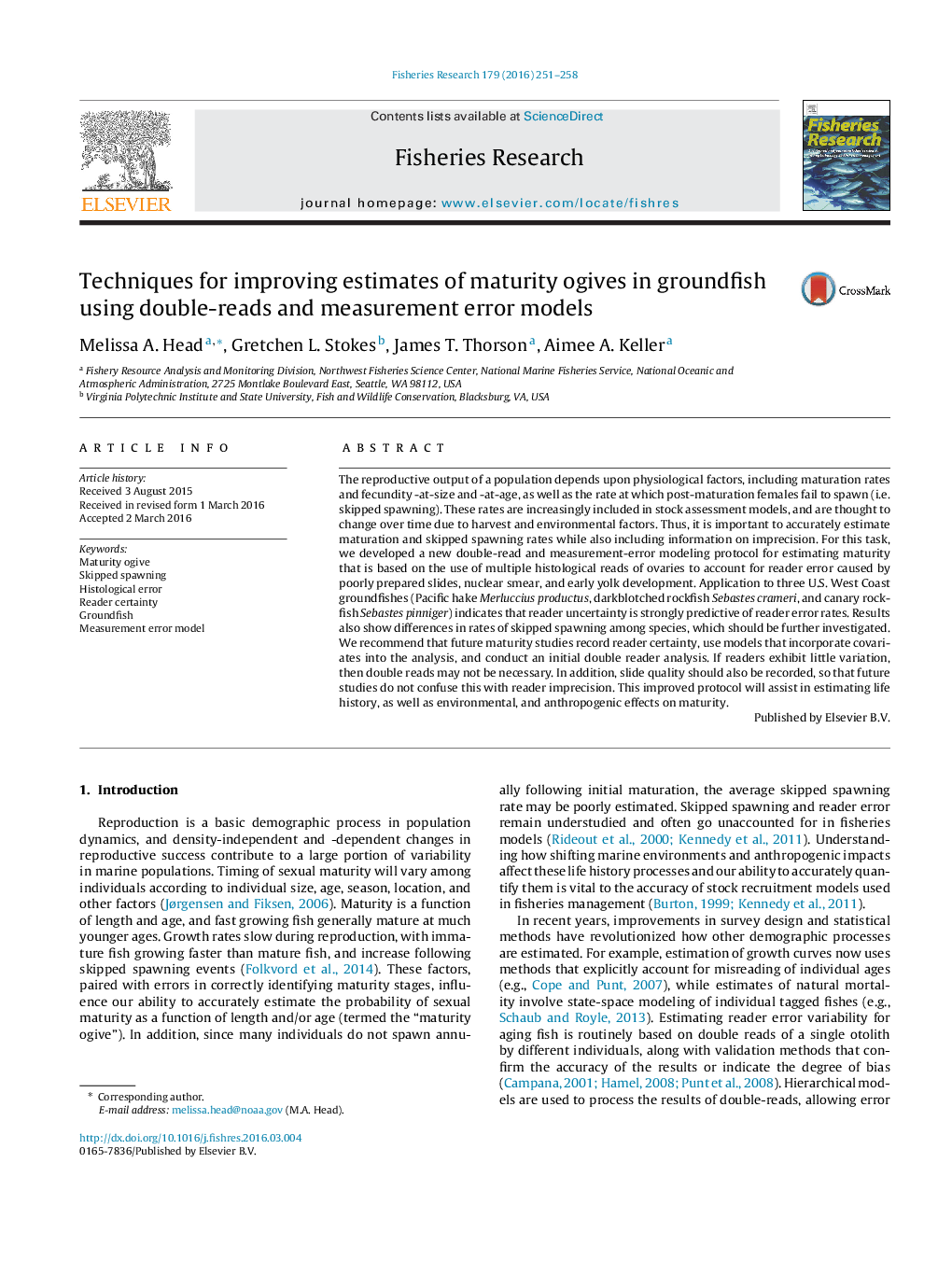| Article ID | Journal | Published Year | Pages | File Type |
|---|---|---|---|---|
| 6385368 | Fisheries Research | 2016 | 8 Pages |
Abstract
The reproductive output of a population depends upon physiological factors, including maturation rates and fecundity -at-size and -at-age, as well as the rate at which post-maturation females fail to spawn (i.e. skipped spawning). These rates are increasingly included in stock assessment models, and are thought to change over time due to harvest and environmental factors. Thus, it is important to accurately estimate maturation and skipped spawning rates while also including information on imprecision. For this task, we developed a new double-read and measurement-error modeling protocol for estimating maturity that is based on the use of multiple histological reads of ovaries to account for reader error caused by poorly prepared slides, nuclear smear, and early yolk development. Application to three U.S. West Coast groundfishes (Pacific hake Merluccius productus, darkblotched rockfish Sebastes crameri, and canary rockfish Sebastes pinniger) indicates that reader uncertainty is strongly predictive of reader error rates. Results also show differences in rates of skipped spawning among species, which should be further investigated. We recommend that future maturity studies record reader certainty, use models that incorporate covariates into the analysis, and conduct an initial double reader analysis. If readers exhibit little variation, then double reads may not be necessary. In addition, slide quality should also be recorded, so that future studies do not confuse this with reader imprecision. This improved protocol will assist in estimating life history, as well as environmental, and anthropogenic effects on maturity.
Related Topics
Life Sciences
Agricultural and Biological Sciences
Aquatic Science
Authors
Melissa A. Head, Gretchen L. Stokes, James T. Thorson, Aimee A. Keller,
